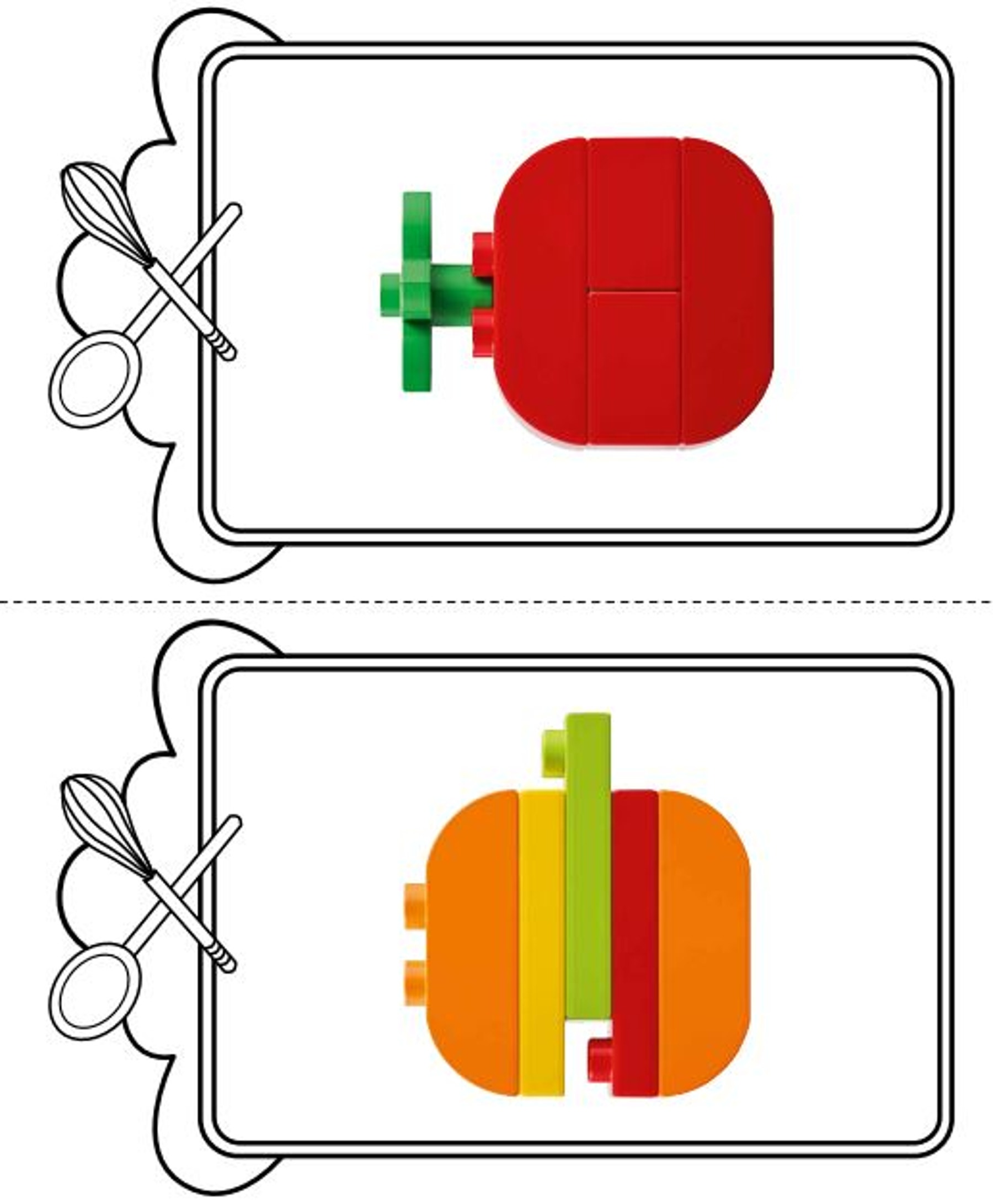Café Bingo
In this lesson children will learn to match shapes by one-to-one correspondence, explore 2D and 3D objects and follow the sequence of events while playing a game

Connect
- Ask the children about their favorite games.
- Talk about how people play games. Be sure to mention that people take turns during games and congratulate the winner.
- Tell the children that they are going to play bingo. Ask if anyone has ever played before and if they have, ask them to explain the game.
- As a group, agree on some rules or guidelines everyone should follow as they play.
Construct
- Preparation: Before this activity, collect all the bricks used in the four printable game cards and place them in an opaque bag or container.
- Hand out one printable model card to each child.
- Explain how to play the game:
- The teacher pulls out one brick from the bag/container.
- The children look at the brick, then at their individual game cards to determine if there is a match. The child whose card shows the matching brick collects it.
- Repeat until all the bricks are used up. Remind the children to call out “Bingo” when they have completed their food item.
- As the children play, encourage them to describe the brick that is chosen.
- Repeat the game as many times as desired. Consider having one of the children play the role of the teacher, choosing the bricks from the bag/container.

Contemplate
- Facilitate a discussion about the game.
- Consider asking questions like:
- How many bricks make up your food item?
- How did you know if a brick belonged to your food item?
- What is difficult about playing a game with others? What is fun?
Continue
- Tell the children that playing bingo is a bit like solving a puzzle and that they are going to make their own puzzles. Explain that a puzzle is a game a person can play on their own or with others.
- Ask each child to build their very own, original food creation.
- Take photos of the models, then print them to make puzzle cards. Alternatively, the children may draw their puzzle cards.
- Ask the children to solve each other’s puzzles, or even work together on one.
Did You Notice?
Observing the following skills can help you monitor whether the children are developing the necessary competencies in math.
- Using mathematical terms, such as positional language and color and shape names
- Categorizing by one or more attributes, and comparing two or more objects
- Sequencing numbers or events
교사 지원
Children will:
- Match shapes by one-to-one correspondence
- Explore 2D and 3D objects
- Follow the sequence of events while playing a game
For up to 4 Children
Scissors
An opaque bag or container that can hold 20 LEGO® DUPLO® bricks
Paper
Colored pencils
Camera (optional)
The Mathematics guidelines from the National Association for the Education of Young Children (NAEYC) and HeadStart have been used to develop the Café+ lessons.
Please refer to the for an overview of the learning values referenced throughout this Teacher Guide.
The learning goals listed at the end of each lesson can be used to determine whether or not each child is developing the relevant early math skills.
These bullet points target specific skills or pieces of information that are practiced or presented during each lesson.




